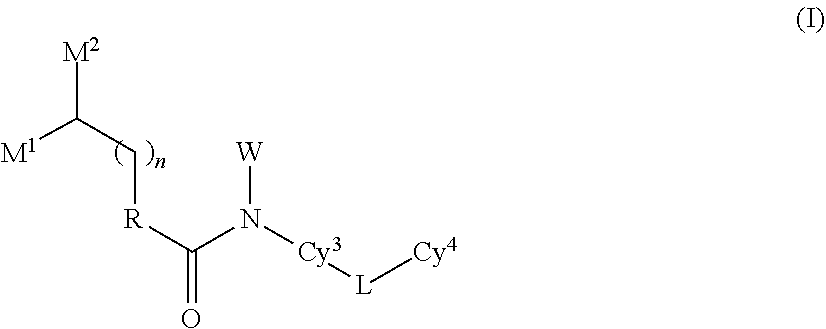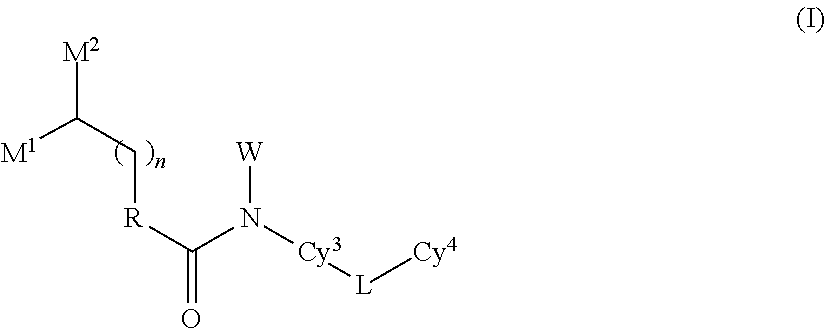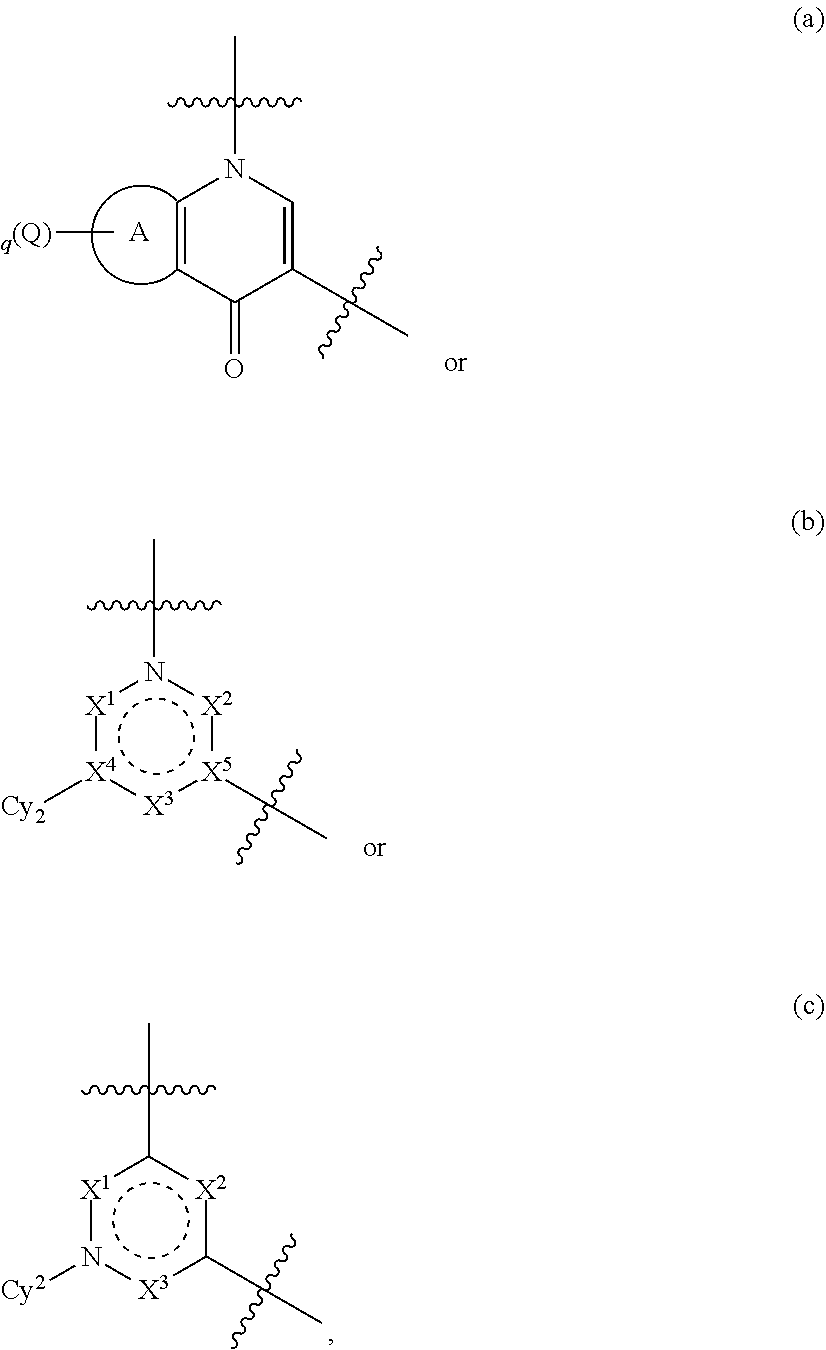Novel quinoline derivative inhibitor
- Summary
- Abstract
- Description
- Claims
- Application Information
AI Technical Summary
Benefits of technology
Problems solved by technology
Method used
Image
Examples
Example
Example 1: Synthesis of N-(5-((6,7-dimethoxyquinolin-4-yl)oxy)pyridin-2-yl)-5-(4-fluorophenyl)-1-isopropyl-4-oxo-1,4-dihydropyridin-3-carboxamide (Compound 14)
[0703]
[0704]Scheme:
Step 1: Synthesis of 2-(4-fluorophenyl)acetyl chloride
[0705]
[0706]2-(4-fluorophenyl)acetic acid (50.0 g, 324.380 mmol, 1.0 eq) and thionyl chloride (77.18 g, 648.761 mmol, 2.0 eq) were dissolved in dichloromethane (250.0 mL). The mixture was warmed to 60° C. under the nitrogen protection, and reacted under reflux for 3 hours. TLC showed the completion of the reaction. The reaction liquor was concentrated under reduced pressure, to which an appropriate amount of dichloromethane was added, and the resulting mixture was concentrated. The above process was repeated twice to produce a yellow oily product.
Step 2: Synthesis of 5-(2-(4-fluorophenyl)acetyl)-2,2-dimethyl-1,3-dioxane-4,6-dione
[0707]
[0708]2,2-dimethyl-1,3-dioxane-4,6-dione (56.10 g, 389.3 mmol, 1.2 eq) and triethylamine (78.78 g, 7798.5 mmol, 2.4 eq) we...
Example
Example 2: Synthesis of N-(5-((6,7-dimethoxyquinolin-4-yl)oxy)pyridin-2-yl)-1-isopropyl-4-oxo-5-p-tolyl-1,4-dihydropyridin-3-carboxamide (Compound 1)
[0721]
Step 1: Synthesis of ethyl 1-isopropyl-4-oxo-5-p-tolyl-1,4-dihydropyridin-3-carboxylate
[0722]
[0723]Ethyl 4-oxo-5-p-tolyl-1,4-dihydropyridin-3-carboxylate (2.00 g, 7.77 mmol, 1.0 eq), isopropyl bromide (1.15 g, 9.33 mmol, 1.2 eq) and potassium carbonate (3.22 g, 23.32 mmol, 3.0 eq) were added to DMF (20 mL). The mixture was reacted at 50° C. under stirring overnight. TLC detection showed the completion of the reaction. The mixture was filtered, and the filter cake was eluted with ethyl acetate. The filtrate was concentrated under reduced pressure. The crude product was dissolved in ethyl acetate (20 mL). The mixture was successively washed with distilled water (10 mL×4) and saturated brine (10 mL), dried over anhydrous sodium sulfate, and filtered by suction. The filtrate was concentrated under reduced pressure. The crude product w...
Example
Example 3: Synthesis of N-(5-((6,7-dimethoxyquinolin-4-yl)oxy)pyridin-2-yl)-5-(4-fluorophenyl)-1-isopropyl-4-oxo-1,4-dihydropyridazine-3-carboxamide (Compound 15)
[0730]
Step 1: Synthesis of 6,7-dimethoxy-4((6-nitropyridin-3-yl)oxy)quinoline
[0731]
[0732]6,7-dimethoxyquinolin-4-ol (15.00 g, 73.10 mmol, 1.0 eq). 5-chloro-2-nitropyridine (11.60 g, 73.10 mmol, 1.0 eq) and potassium carbonate (20.20 g, 146.11 mmol, 2.0 eq) were added to DMF (120 mL). The mixture was reacted at 80° C. overnight under stirring under the nitrogen protection. TLC detection showed the completion of the reaction. The mixture was filtered, and the filter cake was eluted with dichloromethane. The filtrate was concentrated under reduced pressure, and dissolved in dichloromethane (50 mL). The mixture was successively washed with distilled water (20×4 mL) and saturated brine (20 mL), dried over anhydrous sodium sulfate, and filtered by suction. The filtrate was concentrated under reduced pressure. The crude product wa...
PUM
| Property | Measurement | Unit |
|---|---|---|
| Structure | aaaaa | aaaaa |
Abstract
Description
Claims
Application Information
 Login to View More
Login to View More - R&D
- Intellectual Property
- Life Sciences
- Materials
- Tech Scout
- Unparalleled Data Quality
- Higher Quality Content
- 60% Fewer Hallucinations
Browse by: Latest US Patents, China's latest patents, Technical Efficacy Thesaurus, Application Domain, Technology Topic, Popular Technical Reports.
© 2025 PatSnap. All rights reserved.Legal|Privacy policy|Modern Slavery Act Transparency Statement|Sitemap|About US| Contact US: help@patsnap.com



